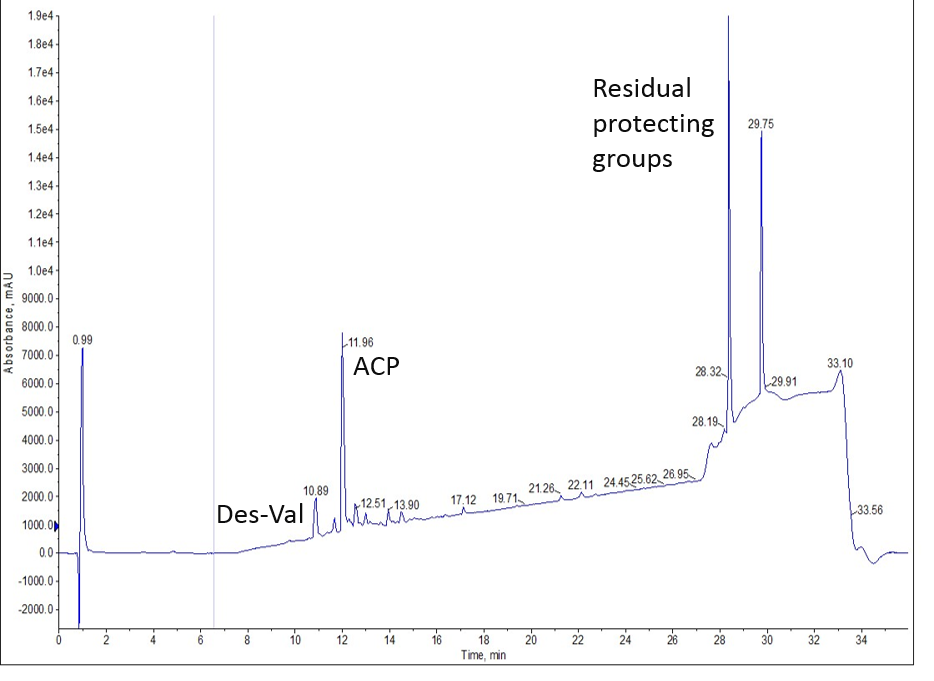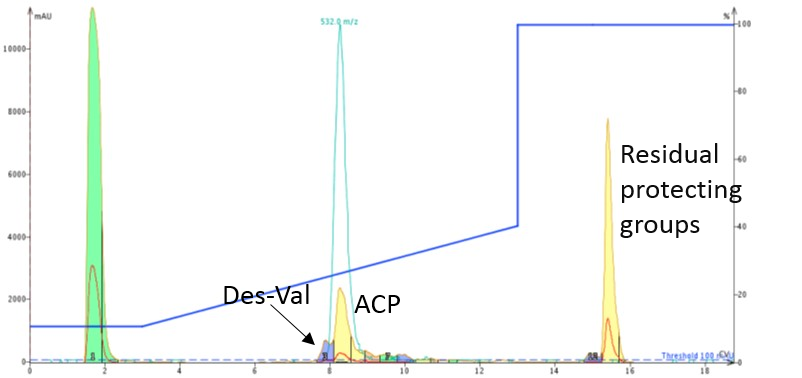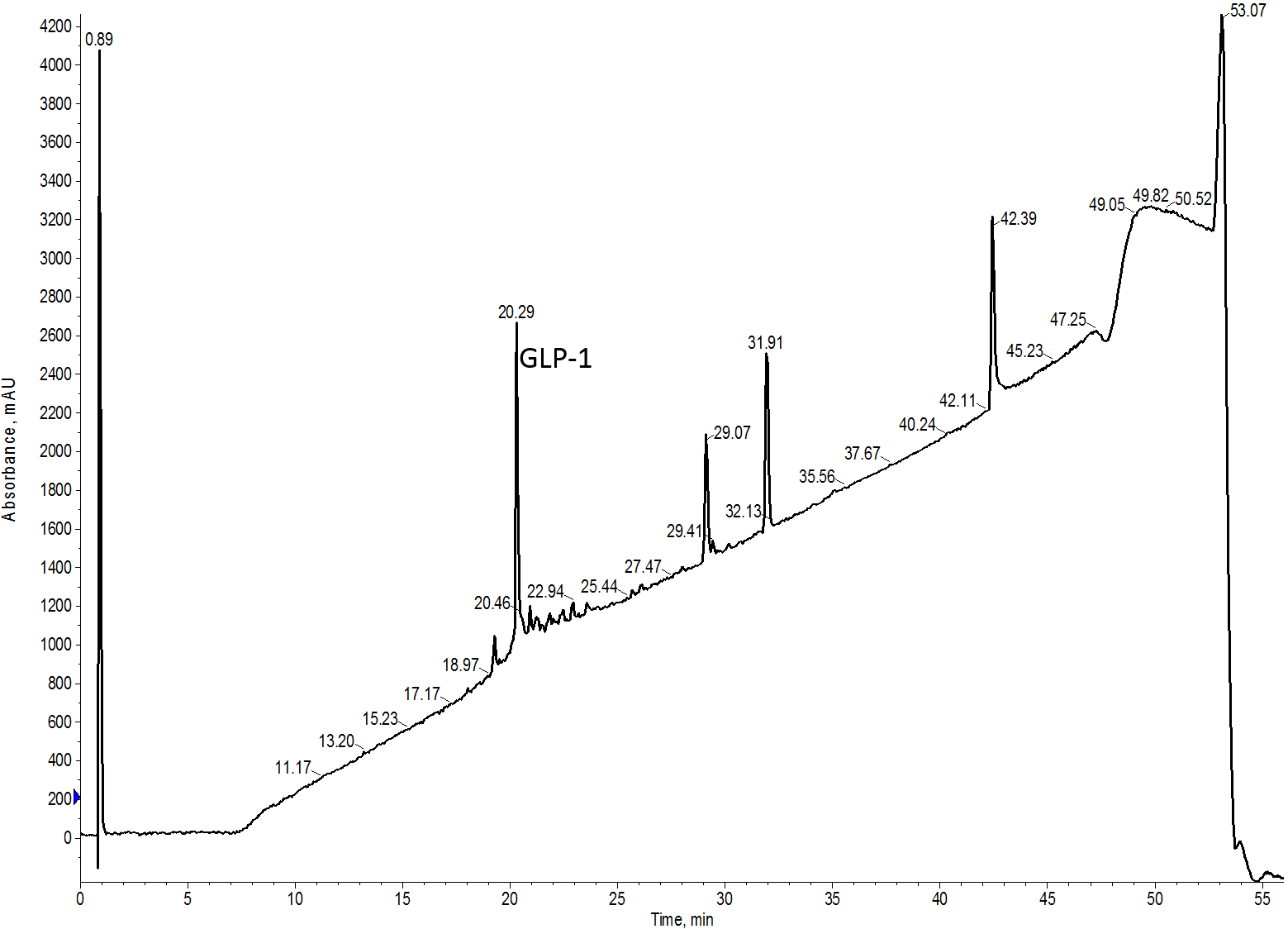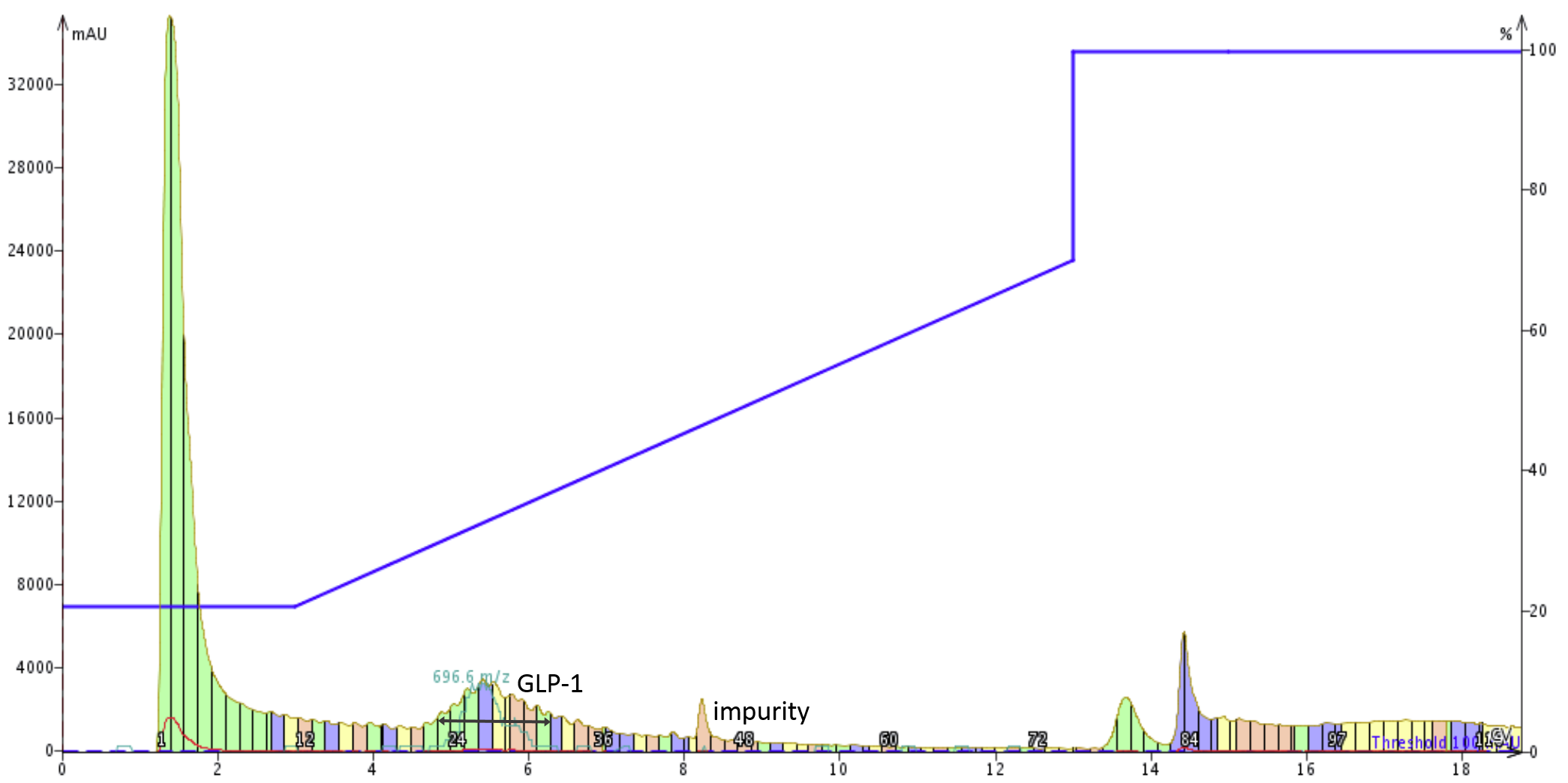Feb 6, 2023 10:11:20 AM
How much peptide is recovered from a reversed-phase C18 cartridge during flash purification?
By Elizabeth Denton

Whether it’s the bonded stationary phase, particle size, or even particle pore size, scientists today are offered a plethora of choices when it comes to reversed phase HPLC columns. An often acknowledged concern in the peptide community though is peptide recovery from reversed phase purification efforts, particularly for precious peptide mixtures. But how is peptide recovery impacted when you use reversed phase flash chromatography for purification?
In today’s post, I’ll compare recovery levels for two peptides that differ in length as well as crude purity using reversed phase flash chromatography. In addition to comparing two peptides, I’ll also evaluate how recovery is impacted by altering the mobile phase pH.
One of the very first questions I asked myself when I began purifying peptides with reversed phase flash chromatography was how much peptide will I lose with this method. It is not uncommon, particularly with low loading quantities, for this to be of concern. I decided to determine the recovery amounts for two very different peptides with different mobile phase additives using the new Biotage® SNAP Bio C18 cartridges. This family of cartridge contains a stationary phase comprised of C18 functionalized, fully end-capped, spherical silica beads that are approximately 20 µm in diameter and contain pores approximately 300Å wide, making them ideal for use in peptide purifications.
For the first injection I wanted to evaluate the recovery of a short peptide that is relatively clean off the resin. I synthesized an ACP 10-mer sequence using my Biotage® Initiator+ Alstra™ using default methods and DIC/Oxyma as my coupling reagents. The synthesis was very successful as expected, but the purity calculation of 36% is low due to the presence of late eluting protecting groups that absorb strongly in the UV, Figure 1.

Figure 1: Crude analytical HPLC chromatogram for the ACP 10-mer peptide. Peak integration indicates that the crude sample is 36% pure.
For the purification, I dissolved about 50 mg of the crude peptide solution in DMSO and injected the solution onto a Biotage® Isolera™ Dalton equipped with a 10 g SNAP Bio cartridge, Figure 2. I chose a gradient of 10% to 50% acetonitrile over 10 column volumes based on the analytical chromatography which suggests the peptide will elute with approximately 30% acetonitrile.

Figure 2: Chromatogram resulting from purification of 48.1 mg crude ACP dissolved in DMSO and injected onto a 10 g SNAP Bio C18 cartridge. Fractions 4 and 5 (yellow) were combined for recovery calculations.
Even with the large particles, when compared to HPLC stationary phases, the purification successfully separated the desired peptide from the des-Val deletion sequence observed. I combined fractions 4 and 5 and when dried, recovered 14.5 mg of the expected 17.3 mg with 92% final purity. This corresponds to 96% recovery!
I chose next to purify a sample of crude GLP-1, a 37-amino acid peptide that came off the resin with approximately 26% crude purity, Figure 3. For this purification I decided to change the mobile phase to a basic pH using ammonium hydroxide. I have used this strategy in the past and found great improvement in the purification results. I have not, however, evaluated the recovery efficiency prior to today.

Figure 3: Crude analytical HPLC chromatogram for GLP-1. Peak integration indicates that the crude mixture is approximately 26% pure.
I dissolved 150 mg of crude GLP-1 in about 1 mL of DMSO and directly injected the solution onto an Isolera™ Dalton equipped with a 25 g SNAP Bio cartridge. Please note, the cartridge size was increased not due to the quantity of crude peptide I wanted to purify, but instead due to the large volume of DMSO required to solvate my crude mixture.
I purified the peptide mixture with a gradient of 20% to 70% acetontrile, Figure 4. My crude analytical chromatography suggests an elution concentration of about 40% acetonitrile, but this was conducted using acid as the mobile phase modifier. However, even with the an alkaline pH for my flash chromatography I expected peptide retention product purification with this gradient.

Figure 4: Chromatogram resulting from purification of 147.5 mg crude GLP-1 dissolved in DMSO and injected onto a 25 g SNAP Bio C18 cartridge. Fractions 23-31 (black arrow) were combined for recovery calculations.
The desired peptide did elute significantly earlier (almost 2 column volumes) in the gradient with the alkaline mobile phase. However, a relatively significant peak is observed in the vicinity of where the desired peptide elutes under acidic conditions (data not shown). The retention time shift excludes this impurity leading to an increase in sample purity. Using the mass peak (light green line) as a guide, I combined fractions 23-31 (see grey arrow in Figure 3) and when dried recovered 33.7 mg of the expected 39.8 mg with 87% final purity. This corresponds to an 85% total recovery!
Although this purity level is not quite sufficient to confidently conduct any biological assays, the sample mixture has been significantly enriched in the desired peptide. The final HPLC polishing can now be completed with fewer injections than would have been required to fully purify the crude material.
Collectively, these data suggest that reversed phase flash chromatography enables high recovery of purified peptides that come from either relatively clean crude peptide samples (simple purifications) or when enriching crude peptide mixtures for final HPLC polishing under a variety of conditions. Importantly, the high recovery was maintained despite changes in the mobile phase additive.
To learn more about strategies that can improve your final purity using flash chromatography for peptide purification, follow the link below.
Learn More about High Purity Peptides
Published: Feb 6, 2023 10:11:20 AM

